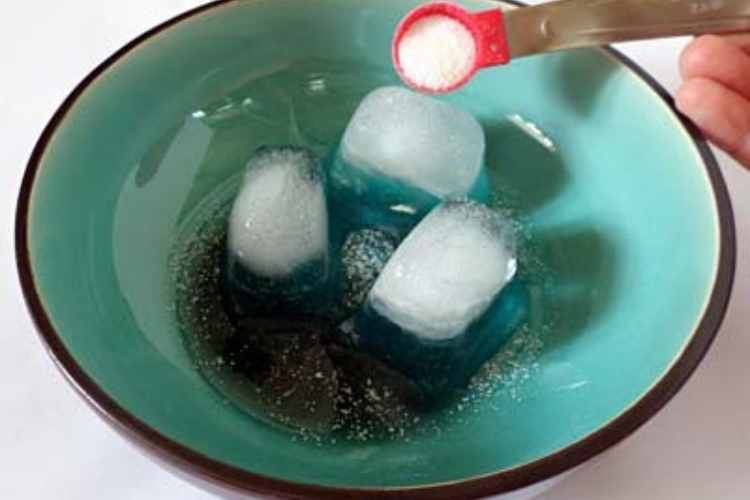In this blog we are going to tell you about Why Does Salt Break and Melt Ice More Quickly Than Sugar, so read this blog carefully to get the complete information.
Whenever roads are blanketed with a layer of ice that could make regular car traffic dangerous, covering the roads with common salt melts the ice. Why, though, does this operate? Wouldn’t sugar, a white, crystalline substance that is impossible to differentiate from salt without sampling, also function in this way?
Experiment
Three containers should be put in a residential freezer: one should encompass tap water, one should contain an infused salt solution, and one should contain concentrated sugar water. The groundwater would then freeze as you would expect it to. While the salt water does not defrost at all, the sugar water congeals and has frozen spots. This occurrence shows extremely cold depression.
related – How Long Does Asphalt Take to Dry Up? Let’s Get to Know by Reading the Blog
Frigid-Point Depression
The term “freezing-point depression” describes the phenomenon where a pure substance, such as water, has a distinct melting temperature (0’C), but if a contaminant, such as sugar or salt, is added, it distributes the heat so that the melting temperature is just less distinct and more diffused.
The melting temperature decreases as the impurity concentration increases. So, super cold depression is a cumulative feature. Additionally, the quantity of solute molecules present in a solution—rather than the kind of solute—determines the solution’s collapsibility. The salt concentration would have a lower melting point when compared to a solution that contains the same amount of sugar or salt in each. Because 1 gram of salt includes more molecules than other substances of sugar.
Substance Concentration
A solution containing a particular number of atoms or molecules is prepared by chemists using moles, a unit equivalent in quantity to the molecular mass (defined in daltons) of a compound but in grams. Every material contains the exact same number of molecules per mole, and vice versa.
The chemical formula for refined sugar, C12H22O11, is 342 daltons. One mole of sugar is equal to 342g.NaCl, the chemical symbol for sodium chloride, has a dalton mass of 58. Weigh 58g to get one mole of salt. Take note that a mole of sodium contains the very same number of water molecules as sucrose, but you do need approximately six times as much of it.
Balance of Water and Ice
At its usual freezing point of water of 0°C, frozen water is in balance with water vapour beneath normal circumstances, meaning this would happily exist as both a fluid and a solid, neither starting to dissolve nor freezing. Ice is therefore coated by a film of water. The liquid and the solid phases are changes in material atoms. It is feasible to use salt to melt the ice thanks to the way water behaves.
Ice Melting
When salt is thrown over ice-covered roads, it breaks the water layer covering the ice and produces a liquid that is no longer frozen. The transition of rigid molecules into a liquid state is no longer feasible. Balance tends to favour the liquid state, thus melting the ice.
related – Pikashow Apk Review
Conclusion
Through this blog, we believe you get complete information on why salt melts ice faster than sugar.
We Hope this blog is sufficient enough to provide the information about Why Does Salt Break and Melt Ice More Quickly Than Sugar. Thanks for reading this blog.
